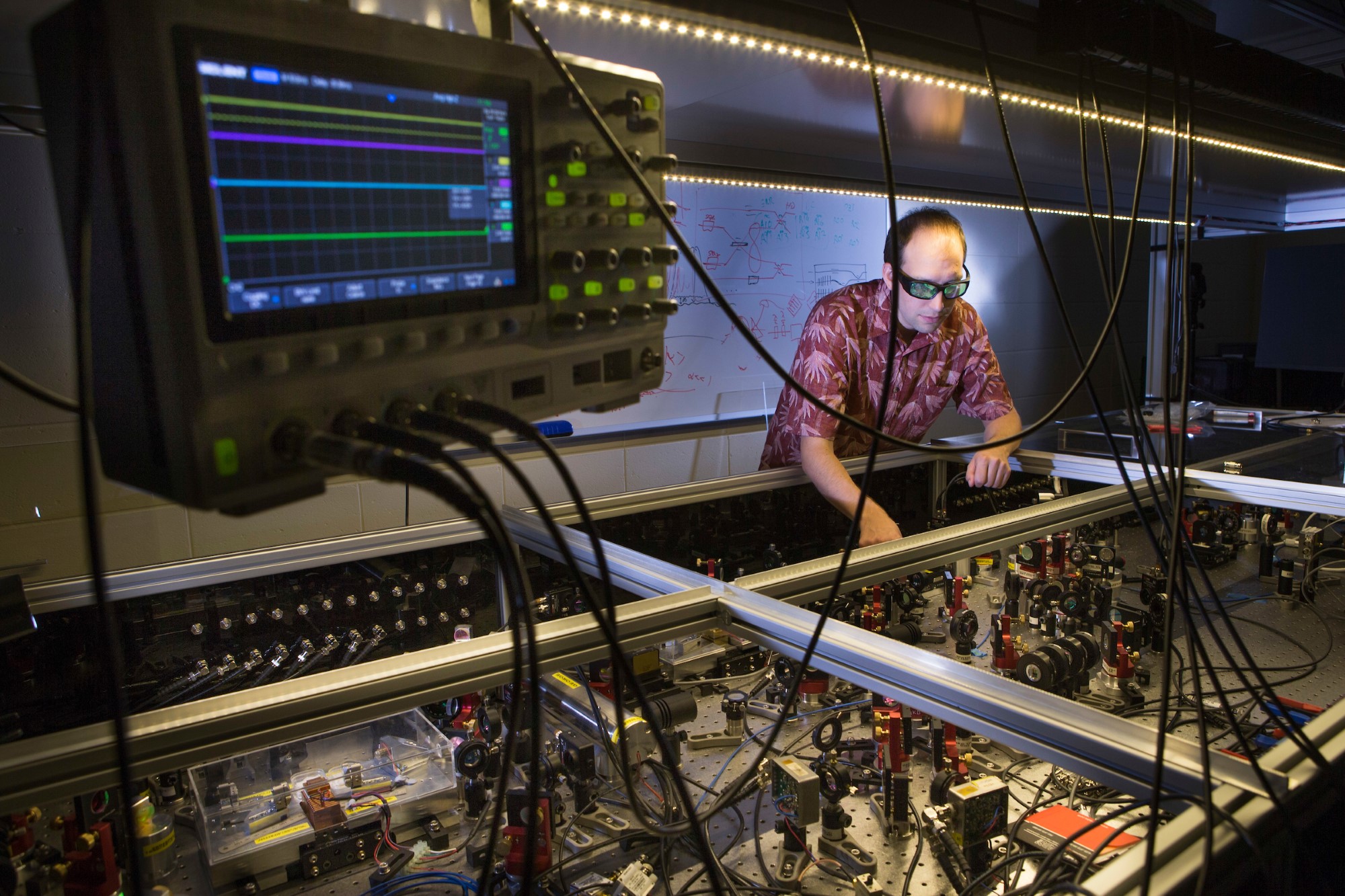
Research projects
Discover the forefront of astronomy and astrophysics through our projects, ranging from deep-space communication systems to groundbreaking adaptive optics. Explore our diverse, ongoing research initiatives shaping the future of space science.
Displaying 16 - 30 of 171 project(s).
In this project we will use data-driven methods to obtain a large abundance census of dwarf galaxies using low-quality data previously not tapped into, to learn how galaxy properties connect to abundance distributions.
Student intake
Open for PhD students
People
- Dr Claudia Reyes, Supervisor
- Professor Melissa Ness, Supervisor
In this project we will use data-driven methods to obtain a large abundance census of dwarf galaxies using low-quality data previously not tapped into, to learn how galaxy properties connect to abundance distributions.
Student intake
Open for PhD students
People
- Dr Claudia Reyes, Supervisor
- Professor Melissa Ness, Supervisor
Obtaining a good understanding of the physics of star formation remains one of the main problems in astrophysics today. The formation of stars determines the structure, evolution and luminosity of galaxies, and quite possibly contributed to the reionisation of the early Universe.
Theme
- Stellar and planetary astronomy
Student intake
Open for PhD students
People
- Dr Marc White, Principal investigator
- Emeritus Professor Geoff Bicknell, Supervisor
Obtaining a good understanding of the physics of star formation remains one of the main problems in astrophysics today. The formation of stars determines the structure, evolution and luminosity of galaxies, and quite possibly contributed to the reionisation of the early Universe.
Theme
- Stellar and planetary astronomy
Student intake
Open for PhD students
People
- Dr Marc White, Principal investigator
- Emeritus Professor Geoff Bicknell, Supervisor
The successful applicant will join the ANU team and will assist with the development of instrumentation for the optical communication team
Theme
- Instrumentation
Student intake
Open for Bachelor, Honours, PhD students
People
- Associate Professor Francis Bennet, Supervisor
- Associate Professor Tony Travouillon, Supervisor
- Dr Doris Grosse, Supervisor
- Dr Elisa Jager, Supervisor
- Dr Michael Copeland, Supervisor
The successful applicant will join the ANU team and will assist with the development of instrumentation for the optical communication team
Theme
- Instrumentation
Student intake
Open for Bachelor, Honours, PhD students
People
- Associate Professor Francis Bennet, Supervisor
- Associate Professor Tony Travouillon, Supervisor
- Dr Doris Grosse, Supervisor
- Dr Elisa Jager, Supervisor
- Dr Michael Copeland, Supervisor
The successful applicant will join the ANU team and will assist with the development of instrumentation for the optical communication team
Theme
- Instrumentation
Student intake
Open for Bachelor, Honours, PhD students
People
- Associate Professor Francis Bennet, Supervisor
- Associate Professor Tony Travouillon, Supervisor
- Dr Doris Grosse, Supervisor
- Dr Elisa Jager, Supervisor
- Dr Michael Copeland, Supervisor
The successful applicant will join the ANU team and will assist with the development of instrumentation for the optical communication team
Theme
- Instrumentation
Student intake
Open for Bachelor, Honours, PhD students
People
- Associate Professor Francis Bennet, Supervisor
- Associate Professor Tony Travouillon, Supervisor
- Dr Doris Grosse, Supervisor
- Dr Elisa Jager, Supervisor
- Dr Michael Copeland, Supervisor
The successful applicant will join the ANU team and will assist with the development of instrumentation for the optical communication team
Theme
- Instrumentation
Student intake
Open for Bachelor, Honours, PhD students
People
- Associate Professor Francis Bennet, Supervisor
- Associate Professor Tony Travouillon, Supervisor
- Dr Doris Grosse, Supervisor
- Dr Elisa Jager, Supervisor
- Dr Michael Copeland, Supervisor
A student undertaking this project will review the existing methods, and assess their suitability in MAVIS, including implementation and testing of a method to actively cancel telescope vibrations with the adaptive optics control loop.
Theme
- Instrumentation
Student intake
Open for Bachelor, Honours students
People
- Dr Jesse Cranney, Supervisor
- Julien Bernard, Supervisor
A student undertaking this project will review the existing methods, and assess their suitability in MAVIS, including implementation and testing of a method to actively cancel telescope vibrations with the adaptive optics control loop.
Theme
- Instrumentation
Student intake
Open for Bachelor, Honours students
People
- Dr Jesse Cranney, Supervisor
- Julien Bernard, Supervisor
The AITC requires a generalised adaptive optics (AO) test bench in order to test experimental and research AO designs and technologies, as well as to verify AO instrumentation. The test bench will be built using in house optical components and be driven by software written in Python.
Theme
- Instrumentation
Student intake
Open for Bachelor, Honours students
People
- Dr Israel Vaughn, Supervisor
- Dr Jesse Cranney, Supervisor
- Dr Noelia Martinez Rey, Supervisor
The AITC requires a generalised adaptive optics (AO) test bench in order to test experimental and research AO designs and technologies, as well as to verify AO instrumentation. The test bench will be built using in house optical components and be driven by software written in Python.
Theme
- Instrumentation
Student intake
Open for Bachelor, Honours students
People
- Dr Israel Vaughn, Supervisor
- Dr Jesse Cranney, Supervisor
- Dr Noelia Martinez Rey, Supervisor
The AITC requires a generalised adaptive optics (AO) test bench in order to test experimental and research AO designs and technologies, as well as to verify AO instrumentation. The test bench will be built using in house optical components and be driven by software written in Python.
Theme
- Instrumentation
Student intake
Open for Bachelor, Honours students
People
- Dr Israel Vaughn, Supervisor
- Dr Jesse Cranney, Supervisor
- Dr Noelia Martinez Rey, Supervisor
The project is supported by the federal government's Australian Space Research Program (ASRP) and will use small-satellite technology provide a new communications infrastructure.
Theme
- Instrumentation
